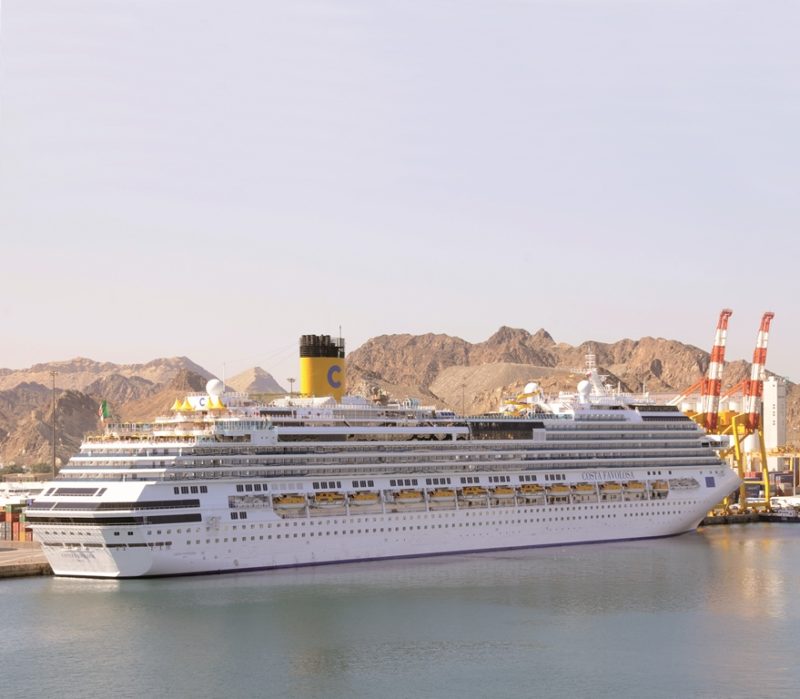
Oman is an ostensible anomaly in the Arab world, in that it is a Western leaning country in the traditional Arab inward leaning Middle East community. One can observe this at first hand at the Al Buraymi border crossing from Dubai and Abu Dhabi, both in the United Arab Emirates (UAE), into Oman on the Sohar road. Al Buraymi offers a colourful introduction into Oman with men wearing embroidered Omani caps known as a ‘kummah’ and white ankle length robes known as a ‘dishdasha’, rather than the full, Arab headdress cover favoured in the UAE, and women wearing traditional Bedu burka face masks and black full length gowns known as an ‘abaya’. A white ‘dishdasha’ is mandatory for all male office employees of the Government of Oman and its ministries, and in most other offices. Foreign businessmen must wear a lounge suit, shirt and tie with all visible jewellery removed, while foreign women must wear high necklines and skirts with hemlines down to ankle length, or certainly well below the knees to avoid giving offence.
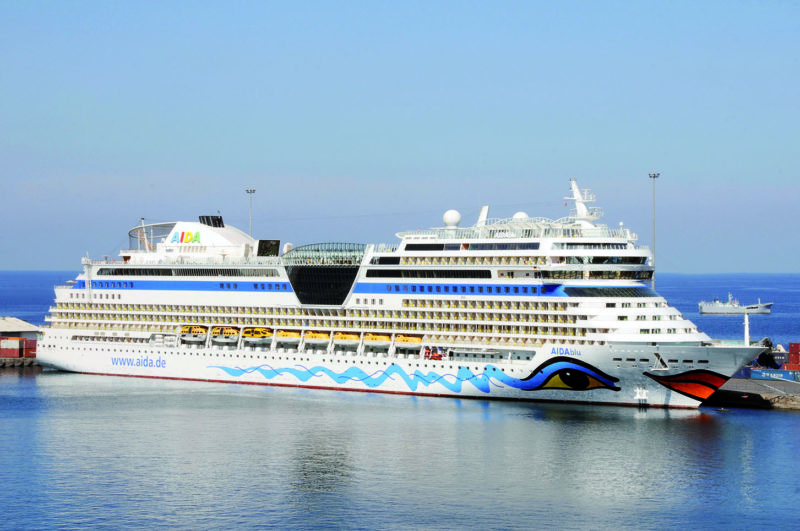
HISTORY OF MUSCAT and OMAN
Muscat in Arabic means ‘the place of falling’, in this case the dropping of anchors in the Old Harbour of Muscat town. In the sixth century BC, the Persians attacked this region and made incursions to control parts of the Persian Gulf and most of neighbouring Oman for a period of time. The British called the area the ‘Trucial States of Muscat and Oman’, and British Royal Engineers hacked out the first one lane track into the Old Harbour of Muscat in 1929 through the Eastern and Western Al Hajar mountains rising up to 4,500feet in height. Muscat became the capital of Oman despite its isolated location, and the town walls that one sees today are reconstructions of the original ones built by the Portuguese. Afonso de Albuquerque of Portugal attacked Muscat and its port in 1507 by sea, and after the town fell, he massacred most of the men, women and children and pillaged the town. The Portuguese held Muscat for well over a century despite frequent onslaughts from the Turks and Persia. The Imam of Oman sent an army in 1648 to seriously weaken the Portuguese defences of Muscat, and two years later they secured the surrender of Portuguese forces.
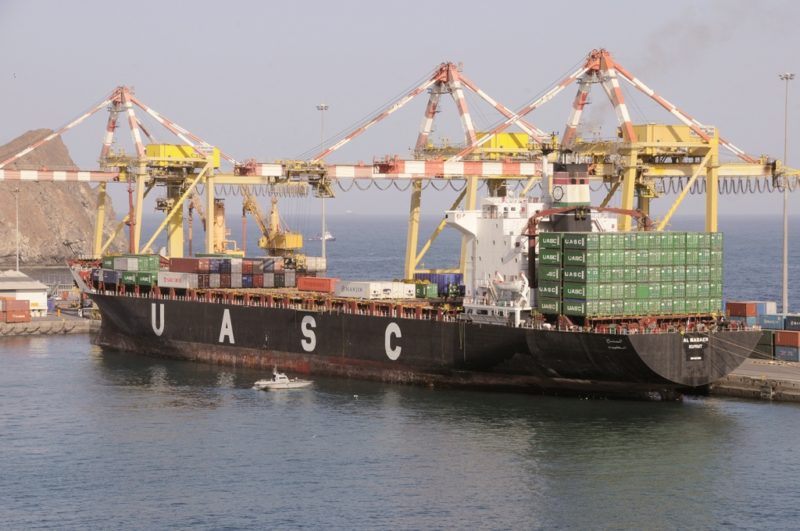
The ruling Arab royal family of the Al Bu Sa’id dynasty emerged after this turbulent period, and they still rule Oman today. By the middle of the 18th century, the influence of the Port of Muscat stretched to East Africa and Zanzibar, and with a multi-ethnic community it became a major trading harbour. The border crossing between Oman and Saudi Arabia at Ramlat Khaylah takes one into the extremely hot desert of the southern third of what today is Saudi Arabia, and is called the Rub’ al Khali or the ‘Empty Quarter’, where average daily temperatures reach almost fifty degrees Centigrade. This is the largest contiguous sand desert in the world, encompassing an area covering 251,000 square miles, a peak temperature of 51 degrees Centigrade was recorded here recently, way beyond the normal operating temperature for most of mankind, with only the few roaming Bedouin tribes having the knowledge of how to cross this trackless area with their camel trains.
The Islam religion of the prophet Mohammed was embraced in the year 630 when Omanis sent emissaries to Muslims in the Western Arabian city of Medina. Islam then became the religion of all Omanis and other Arabs that today form part of the United Arab Emirates (UAE). The Western powers of Europe and the United States of America had little idea of what lay in what is now Oman, Saudi Arabia and the UAE. The discovery of oil in the lands of the northern part of the Persian Gulf changed that area to a huge extent, but the southern lands remained an enigma, shrouded in mystery. The adventurer Wilfred Thesiger crossed the Rub’ al Khali in 1948 with the help of the native Bedouin tribes, but the fabled lost city of Ubarin a remote area of Oman was only discovered as recently as 1992.
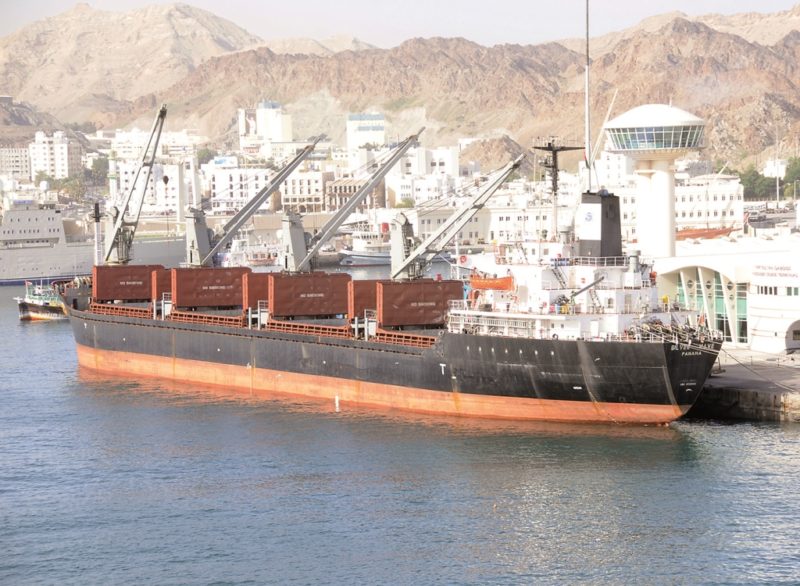
The British arrived in the area shortly after 1800 with Dubai being no more than a fortified town, surviving despite frequent pirate attacks. The first set of peace treaties between the Arabs and Britain was in 1820 in the sheikdom that was called the ‘Trucial Oman’ and is now part of the UAE. The small number of these sheikdoms could be counted on the fingers of two hands, who owed their allegiances to either the Sultan in Muscat, the capital of Oman, or the sheikh in Abu Dhabi. In 1891, Britain established a special relationship with Oman by Treaty. Since then, Britain has intervened in the traditional quarrels of the Ibadi Muslims with the Sunni Muslim minority, and in the rivalries between the main tribes. The British deposed the last Ibadi Imam leader in 1958. The present Sultan Haitham bin Tariq Al Said has his palace in Muscat,but he also makes occasional visits to Salalah, the Omani city of the southern Dhofar part of the country.
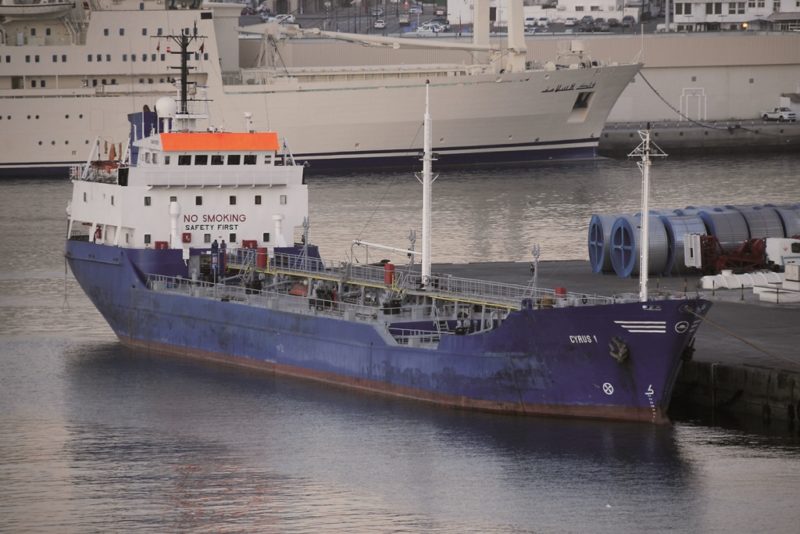
Salalah was absorbed by the Sultanate of Muscat in the nineteenth century, and became its capital between 1932 and 1970 under the royal family of Sultan bin Taimur, the royal family that had ruled Oman from antiquity. An assassination attempt was made in 1966 on Sultan bin Taimur in Salalah, and Sultan Qaboos, his son, decided to move the capital of Oman to Muscat after an uprising on 23rd July 1970. The Sultan would normally live in the Grand Palace of Salalah rather than in Muscat, but Sultan Qaboos lived in Muscat from when he ascended to the throne in 1970 until his death in 2019 but he visited Salalah occasionally around once every four years. A large parade was held in Salalah in 2010 to mark the fortieth year of the ascendancy of Sultan Qaboos to the throne and his visit to the city. However, protests began to surface a year later in 2011 with the ‘Arab Spring Movement’ with the expulsion of ministers, a revolt against the cost of living, and the establishment of many new Islamic Banks
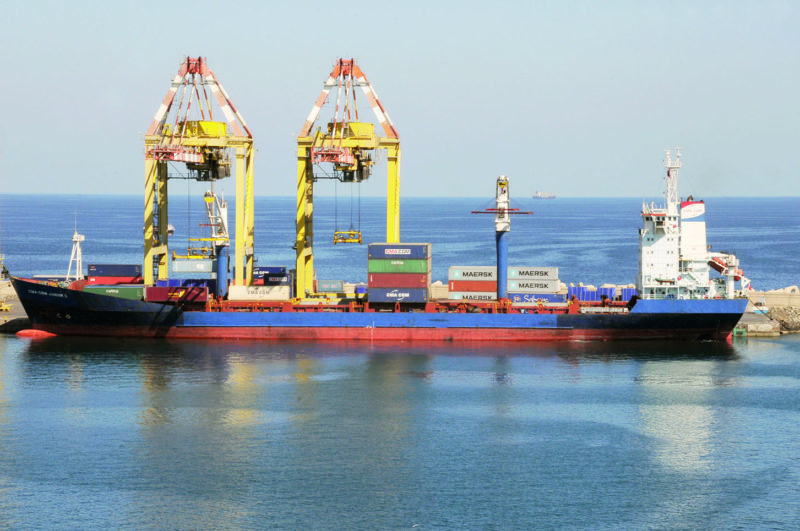
The Old Harbour of Muscat is very historic and is not used today by commercial shipping, with Mutrah harbour and Port Sultan Qaboos, lying a few miles to the west of the old harbour along the Mutrah Corniche road, used instead. There were three gates between Muscat and Mutrah with large vehicles only allowed to drive through one of these gates, and even then only with a special dispensation. Different tribes had responsibility for the three gates with curfews imposed at sunset. The walls on either side of the main gate at Mutrah were eventually demolished, but the doors of the main gate were still ceremoniously closed at sunset, because nobody had given the order to stop doing so.
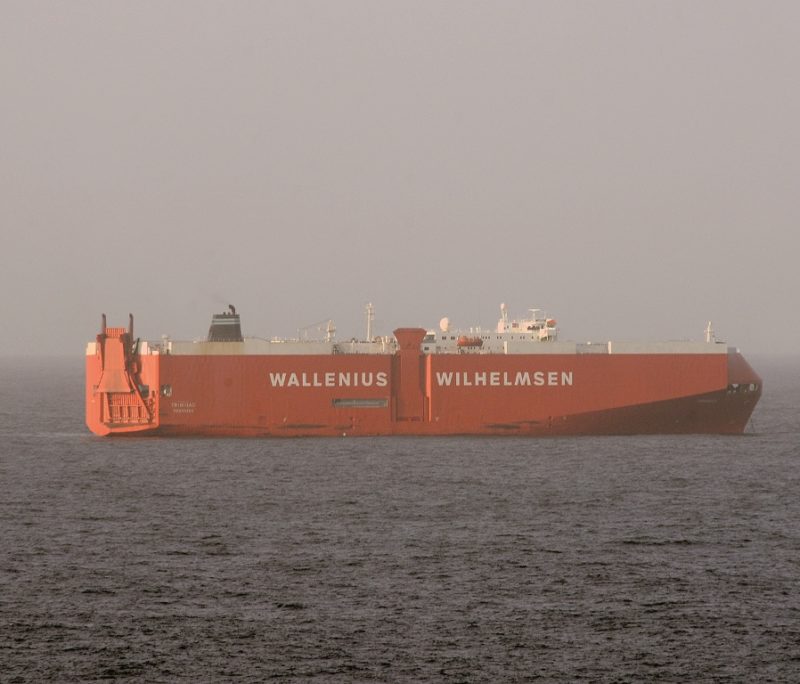
The magnificent consulate of the Old British Embassy at Muscat was built in 1880 and had a splendid flagstoned verandah, overlooking the harbour and towered over by Al Jalali Fort, which at that time was the main prison of the Sultanin Muscat. Unfortunately, this lovely old embassy was demolished in the 1990s to make way for a new palace for the guests of the Sultan, which occupies a major site on the harbour front between Al Alam Palace and Al Jalali Fort. Al Alam Palace (the Flag Palace) is of low construction with flat roofs and was built in the 1970s and replaced a number of very old buildings on the harbour front. The blue and gold columns give a quintessential Arab feeling to the building, while it is guarded on either side by the nearby twin forts of Mirani and Jelali. The nearby guest palace has an English style front garden with the ceremonial entrance flanked by cannons and raised flower beds. The large lawn to the rear of this palace is used for receptions for example on the Armed Forces of Oman Day.
The Sultan Qaboos Grand Mosque at Al Ghubra in Muscat is the third largest in the world and most of its large complex is open to non Muslim visitors to view the beautiful marble walls and panelling, provided the right clothing is worn to respect the Muslim religion. Construction began in 1995 and took six years to complete the marble, sandstone and wooden building with four corner minarets of 45 metres in height together with a taller minaret that represent the Five Pillars of Islam. The largest man made Persian carpet in the world is made of fine wool and cotton in 28 colours and measures 70 metres by 60 metres and weighs 21 tonnes, having been made by 600 female weavers in Iran over four years. There are 35 chandeliers and an extremely large Swarovski crystal chandelier with 1,122 lights to illuminate the prayer hall for 6,600 worshippers, although the total complex can accommodate over 20,000 worshippers in a grand setting that proclaims the confidence of the Islamic community of Oman. Oman has a population of 4.28 million people, with its chief exports being oil, LNG, organic chemicals, steel, aluminium, fertilisers, textiles and clothing, and many smaller consumer products.
PORT OF SULTAN QABOOS
At Mutrah harbour in location 23°37′ North, 58°34′ East, this new port opened in 1974 and was originally named Mina Qaboos after the son of the ruling family that came to power in 1970 after supporters of Qaboos bin Said Al Said stormed the palace in Salalah on 23rd July 1970 and forced his father to abdicate and accept exile. Qaboos was only 30 years of age at the time, but his subsequent successful big expansion of the economy of Oman, and with the population seeing their living standards raised enormously, won great respect. A new harbour at Mutrah was essential to his plans and construction began immediately.
The Petrol Development Oman (PDO) discovered commercial reserves of oil from 1962 at Yibal and larger oilfields at adjacent Natih and Fuhud in 1964. Government revenues from the oil that began flowing in 1967 from these interior oilfields of Oman through various land pipelines into one large pipeline at Muscat is the principal reason why the economic fortunes of Oman were transformed. An underwater pipeline then takes the oil for export to large tankers loading at the deep water oil terminal of Mina Al Fahl. The oil reserves were estimated at 5 million barrels, and gas reserves were estimated at over 20 trillion cu.ft. of gas in the 1960s.
Oil production averaged around 300,000 barrels per day in 1970, and climbed throughout the 1970s and early 1980s to 641,000 barrels per day, and to 904,000 barrels per day in 1997, 956,000 barrels per day in 2001 but had declined to around 800,000 barrels per day by 2004. It was obvious that oil production would further decline, and Oman turned instead to natural methane gas, transported in liquid form as LNG. An expensive LNG terminal came into operation in Millennium year financed by heavy overseas borrowing, with a second train of LNG in operation in 2001 and a third in operation by 2003, when Omani LNG exports accounted for 15% of the total Oman oil and gas income. Plans were unveiled for a much larger expansion of the Sur LNG export terminal on the extreme eastern point of Oman to the south of Muscat town and with a long history of building the very large Arab dhows that traded for centuries down to Zanzibar. These dhows were not built to blueprints, but to ‘eye’ by very skilled Arab shipbuilders.
The success of the Port of Sultan Qaboos at Mutrah harbour came despite the nearby Old Harbour at Muscat as it was more sheltered and had a better anchorage, and because Mutrah was originally accessible through the mountains to camel caravans from the interior of Oman. Dates were carried on the camel caravans for export to India on large dhows, and imported manufactured goods arrived for the towns of northern Oman. The Port of Sultan Qaboos was very quickly completed with ten berths as follows:-
- Berth 1 a multi-purpose berth of 235 metres in length and an alongside depth of 13.0 metres
- Berth 2 a multi-purpose berth of 235 metres in length and an alongside depth of 13.0 metres
- Berth 3 is a bulk and general cargo berth of 228 metres in length and an alongside depth of 10.9 metres
- Berth 4 and Berth 5 are the main container terminal quays with a total combined length of 366 metres and an alongside depth of 10.9 metres, and were in operation by 1984. Ground storage for 2,028 containers is provided as well as for 300 reefer plugs.
- Berth 6 is a general cargo berth of 198 metres in length with an alongside depth of 9.6 metres, now rebuilt into a new state of art Cruise Terminal.
- Berth 7 is for ro-ro and lift-on cargoes and with Berth 8 has a combined length of 366 metres with an alongside depth of 9.6 metres, and two covered warehouses of 6,600 square metres.
- Berth 8 has a combined length of 366 metres with an alongside depth of 9.6 metres, and two covered warehouses of 6,600 square metres.
- Berth 9 is the longest at 400 metres and with an alongside depth of 4.0 metres is only mostly used by coasters, small marine craft and the local tug basin.
- Berth 10 has covered warehouses of 20,800 square metres, a marine workshop, a shed for the Omani military to use, and is the berth for the Omani Royal Yacht Squadron.
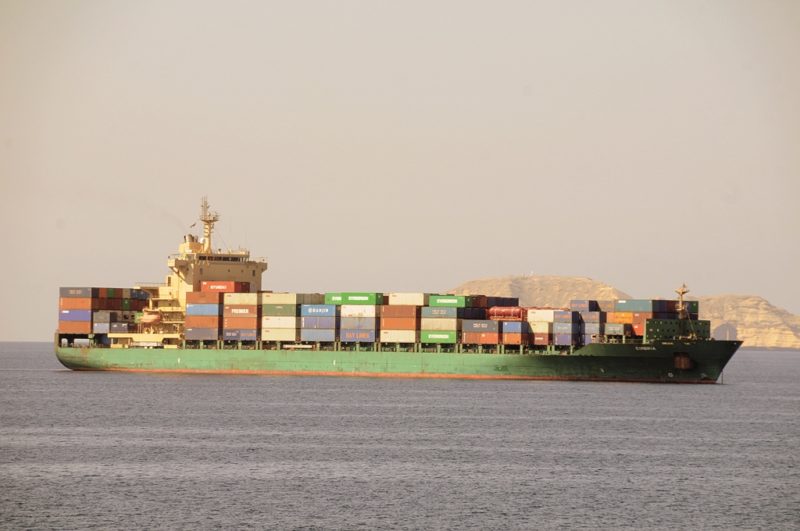
Port Sultan Qaboos handled timber, grain, steel products, vegetable oils, cement and bitumen with total imports in 1974 running at 11.6 million tonnes and total exports running at 2.3 million tonnes. The Port was managed by the Port Services Corporation S.A.O.G. and was developing at a successful pace when an announcement was made by the Ministry of Transport of Oman on 31st August 2014 that most commercial activities would be switched to the new northern Port of Sohar with immediate effect. The decision by Sultan Qaboos was designed to alleviate severe road congestion due to lorries arriving and leaving from the port. Cruise ships, tourist excursion boats, military Royal Omani Navy vessels, fishing vessels for Mutrah Fish Market, and the cement and bitumen trades would remain at the Port Sultan Qaboos. A new Cruise Ship Terminal was to be built, and parts of the new Mutrah Corniche and Sultan Qaboos waterfront projects opened to tourists in 2019 in $2 Billion projects to build the new Discovery Centre, Cruise Terminal, art galleries, hotel, restaurant, real estate and tourism centres. The new Discovery Centre is situated on a hill overlooking the Mutrah Corniche and the sea with exceptional views of the Gulf of Oman.
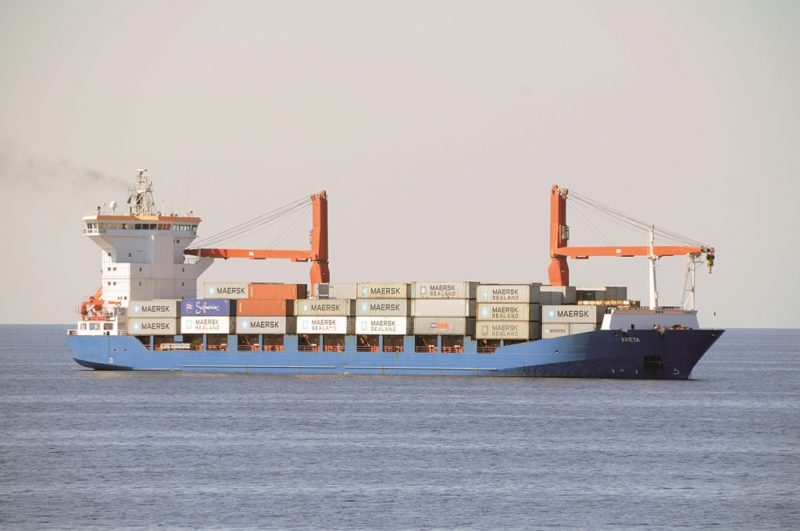
NEW CRUISE TERMINAL and CRUISE LINERS CALLING in 2020
A new cruise terminal has been built at Berth 6 to a design by consulting engineers Arab Engineering Bureau. The terminal area is 3,000 square metres and it is very much a landmark building with a remarkable Tower Observation Lounge. The spacious Arrivals Lounge has several dedicated areas for immigration, customs, baggage collection and screening. This is a state of the art new building with, in addition, as hopping arcade, duty free shops, restaurants, a heritage centre and recreation facilities. The large number of cruise ships and cruise lines calling in 2020 included several on long Round the World cruises of up to 168 nights in length e.g. QM2 of Cunard Line, Boudicaa of Fred. Olsen Cruises, Arcadia of P. & O. Cruises, and Albatros of Phoenix Seereisen of German
The total number of calls were:-
- Aida Cruises – 38
- MSC Cruises – 29
- Costa Cruises – 23
- TUI Cruises – 18
- Pullmantur Cruises – 17
- Royal Caribbean International – 10
- Celebrity Cruises – 8
- Seabourn Cruises – 8
- P & O. Cruises6Silversea Cruises – 5
- Marella Cruises – 4
- Oceania Cruises – 4
- Regent Seven Seas Cruises – 4
- Norwegian CruiseLine – 3
- Azamara Cruises – 3
- Princess Cruises -3
- Crystal Cruises -3
- Phoenix Seereisen -2
- Viking Ocean Cruises -2
- Cunard Line -1
- Fred. Olsen Cruises -1
- Le Ponant Cruises -1
- Le Bellot Cruises -1
- Le Jacques Cartiers Cruises -1
- GRAND TOTAL – 95
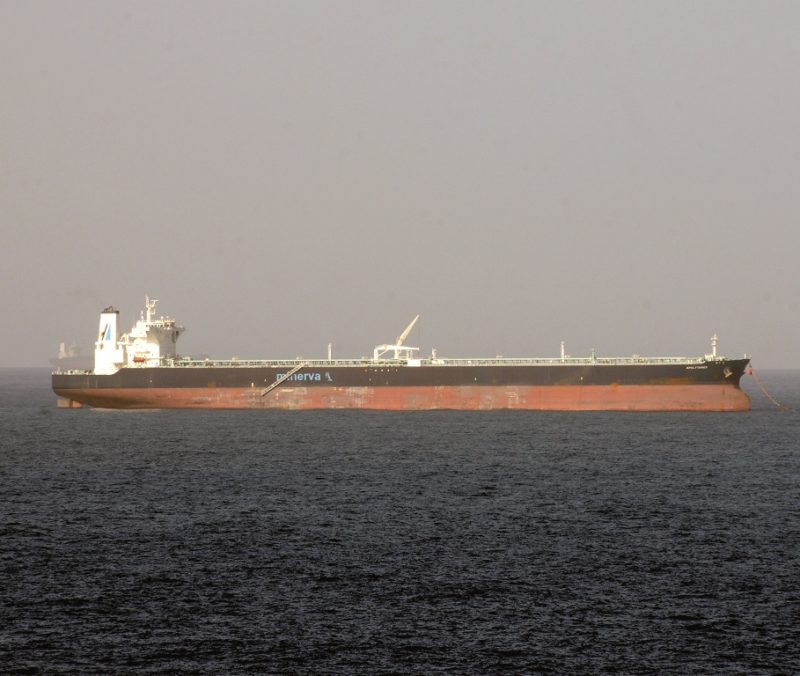

PORT OF SOHAR
The Port of Sohar was opened in 2004 some 220 kilometres north up the coastline from Mutrah, Muscat and Port Sultan Qaboos. It is located at Liwa to north of Suhar township, which has the older spelling of the place name. The closure of most of the trades of Port Sultan Qaboos from 31st August 2014, plus an expanding Free Trade Zone, and a beautiful location well outside of the politically charged Strait of Hormuz offered shippers reduced shipping times and eliminated the need for increased expensive war risks insurance in an unstable region. Goods can also be shipped to and from the port overland from Wadi Al Jizi, and major clients such as Vale of Brazil, Hutchison Whampoa of Hong Kong, Steinweg ro-ro shipping, Oiltanking Odfjell for oil products, Sohar International for LNG gas production, and Wallenius Wilhelmsen, ‘K’ Lineand others in the vehicle ro-ro sector, plus clients of the heavy lift, break-bulk and LPG sectors have flocked to the new port. Oiltanking Gmbh and Odfjell Terminals A/S announced in May 2005 that their subsidiary in Oman will operate the liquid bulk facilities at Sohar, as well as numerous projects in Oman for gas transmission, oil refining and petrochemicals production. Five new tugs were recently ordered by Svitzer to replace the existing tug fleet at the port.
Sohar Free Zone is almost fully leased out in 2020 with around 35 large multinational companies already on site. Sohar International Airport is 13 kilometres away, but Muscat International Airport is much further at 220 kilometres away. New container and break bulk services have recently been diverted to the port due to the severing of links with Qatar by Saudi Arabia, United Arab Emirates, China and other Arab countries due to claims of Qatar supporting Iranian and Islamist terrorists, a claim denied by Qatar. Some of the major events and features of the new port have included:-
- The Port was built by a $130 million contract with Hutchison Whampoa of Hong Kong.
- The new port created 430 jobs and the biggest names in the container, bulk, break bulk, oil, LPG and LNG gas sectors were attracted to the port.
- The port soon became a fast growing regional hub handling well over 1.0 million tonnes of cargo per week, with 3,000 ships calling at the port per annum.
- The new port soon attracted a share of the U. S. A. trade to the Far East, Singapore, India and Middle East areas.
- The Port of Sohar handles all types of cargo for import and export.
- Container traffic was soon up 58% year on year after a $130 million upgrade to the container terminal.
- Ro-ro, logistics and car imports began with the arrival of Hawaiian Highway of ‘K’ Line.
- Logistics traffic increased with major worldwide companies using the safe new port.
- Shipping agents and other port services quickly relocated to the new Port of Sohar.
- The Port of Sohar signed a long term agreement with the Port of Rotterdam for 30 years up to the year 2043 by the joint Port of Sohar Industrial Company with a massive 6,300 hectares of land area for development. A modern waste handling facility was built at the port by Al Ahlia Environment Service. The largest pallet manufacturing plant in the world was built near the Port of Sohar and cost $230 million.
- The Free Trade Zone attracted big customers for smelters such as Sohar Aluminium whose partners include Rio Tinto Alcan, and Vale of Brazil built an iron ore pelletising plant for the production of iron and steel.
- The Port of Sohar celebrated its 15th year of operation in 2019.
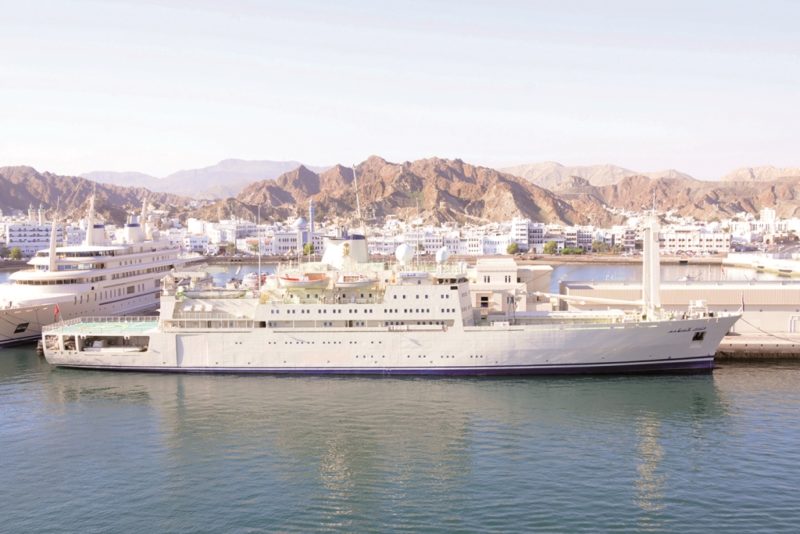
PORT OF SOHAR TERMINALS
TERMINAL A
A bulk handling terminal for Vale of Brazil bulkers of 400,000 dwt importing iron ore for the processing plant to produce steel pellets for export from Sohar to the Middle East and North Africa. The Terminal A jetty design was prepared in 2008 by Royal Haskoning DHV, and two thousand workers worked shifts around the clock to complete the jetty for the first ship to dock in July 2011. There is one import berth for bulkers of 400,000 dwt and two export berths for Panamax size and Capesize bulkers. Some eight million cubic metres of material was dredged to form the approach channel and the berths to give safe alongside depths of 25.0 metres. This jetty is 1.4 kilometres long with an access tressle of length 780 metres, and a main jetty of length 600 metres and 64.5 metres in width. The jetty was built using 500 steel piles with a steel superstructure and a reinforced concrete deck. A total of five new ferrochrome smelters were built or are under construction in the area for Vale of Brazil, Changbao of China, Sohar Steel of Oman, Sohar Aluminium of Oman, Inco of Turkey, and Jindal, Indsil, Dunes and Cabrol of India.
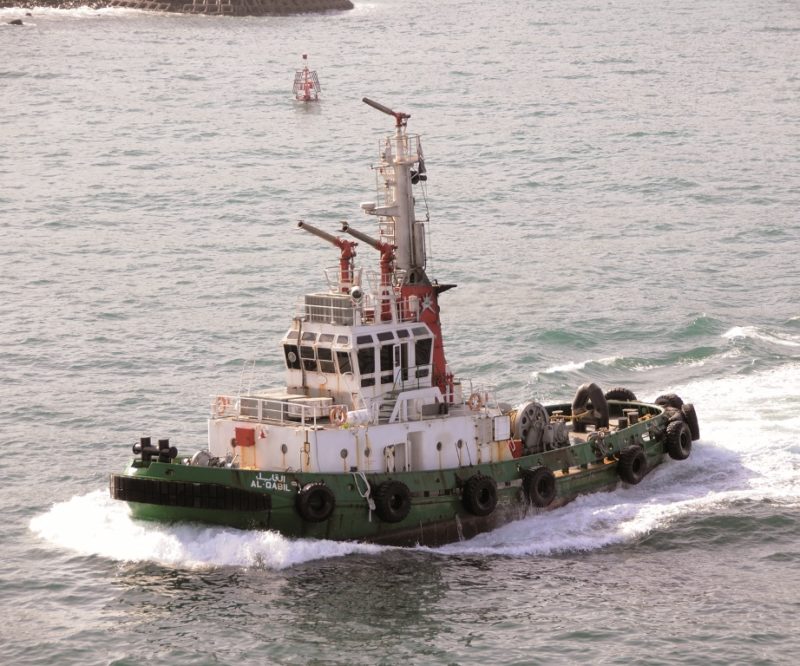
TERMINAL B
A bulk handling terminal for the agri-bulks industries of rice, sugar and grain for leading worldwide clients such as Tate & Lyle Sugars with a sugar refinery, plus a flour mill and a grain silo complex, and a soya bean crushing plant. Plans were finalised in March 2014 for this new agri-bulks terminal to handle four million tonnes per annum of food products including 700,000 tonnes of grain for a new flour mill. Oman relies heavily on imports for the majority of its food supplies, with a new grain storage facility at the terminal managed by the Oman Flour Mills Company (OFMC). The sugar refinery was also under construction for the Oman Sugar Refinery Company (OSRC) in a joint investment between Tate & Lyle Sugars and an Omani investment company. The sugar refinery cost $200 million to build on 180,000 square metres of land and produced 700,000 tonnes of sugar per annum during the first year of operations in 2015. Raw sugar was imported from Brazil, Thailand, India and Australia, and the handling rates of the throughput is around 600tonnes per hour of sugar, rice or grain at this dedicated agri-bulks terminal.
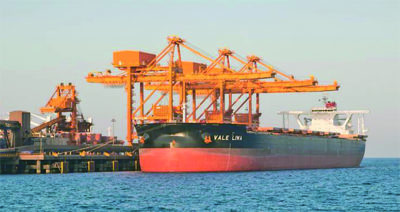
TERMINAL C
The Oman International Container Terminal (OICT) was renamed Hutchison Ports Sohar Container Terminal shortly after it opened in June 2016 in the northern part of the port, with the first ship to berth being MSC Altair of 13,000 TEU capacity. The terminal can handle the latest and biggest container ships in the world of 23,000 TEU capacity, and has a current throughput of 1.6 million TEU per annum. Containerships of Maersk Line, MSC, APL, UASC, OOCL, CMA CGM, Hapag-Lloyd, Zim Line, Hyundai, OEL Lines, SL Lines and Global Container Lines call at the port. Containers can be trucked across the Al Buraymi border crossing into the United Arab Emirates (UAE) from UASC container ships, UASC having been founded in 1977 by the Governments of the UAE at Dubai, and the States of Bahrain, Kuwait, Qatar, Saudi Arabia and Iran. Feeder container ships run to and from several ports in India including Jawaharlal Nehru (Mumbai), Mundra, Chennai, Hazira, Vishakhapatnam, Pipavav, Nellore and Kolkata, as well as to Jebel Ali (UAE), Dar es Salaam (Tanzania) and Djibouti on the Red Sea. The large size of the terminal can be gauged from:-
- Terminal Land Area – 68 hectares
- Quay length – 970 metres
- Quay berths – 3
- Alongside depth – 18.0 metres
- Gates – 3 gates with a Main and two Side gates
- Turning Circle – 760 metres
- Gantry Cranes – 11
- Weigh Bridges – 8
- Rubber tyred gantry cranes – 36
- Reach stackers – 6
- Yard Tractors – 92
- Yard Trailers – 117
- Forklifts – 12
- Reefer plugs – 1,200
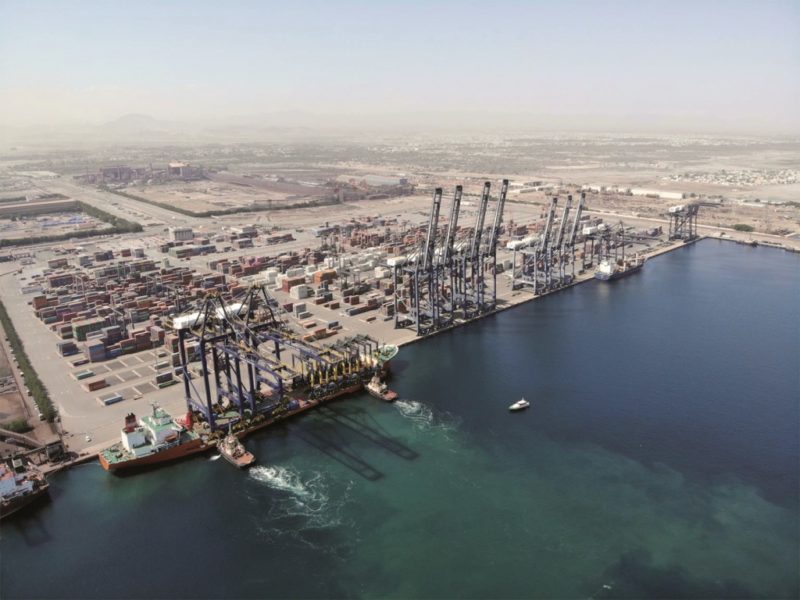
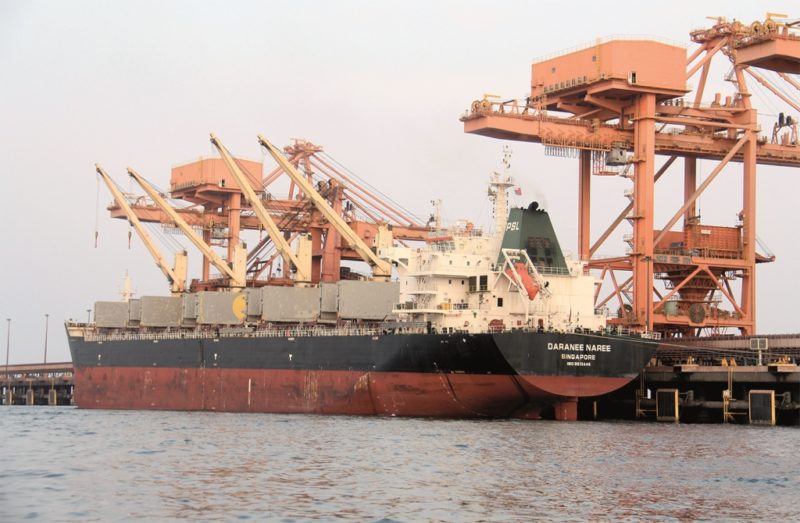
TERMINAL D
A future container terminal to be built on a large rectangular area of reclaimed land just off the main quays of the port and opposite the existing container terminal
TERMINAL 2D
This is situated on 250 hectares of land in the southern area of the port and on the inside berths of the curved breakwater. The terminal is of 750,000 square metres in area and handles cement, bitumen, molasses, metals, petrochemicals, logistics, food and utility cargoes. The petrochemical oil refinery is operated by ORPIC (Oman Oil Refineries and Petroleum Industries Company) and produces 198,000 barrels of refined oil products per day. In addition to heavy fuel oil and all of the lighter grades of product, the refinery produces large volumes of naptha and propylene that serve as feed stocks for the adjoining polypropylene and aromatic additives plant. A new bunkering hub for the delivery of heavy fuel oil, diesel and LNG fuel is in operation. Liwa Plastics Group began operations at the end of 2019 with the immediate production of 1.5 million tonnes of polypropylene. Cars and vehicles produced by Nissan, Toyota, Lexus, Renault and other well-known leading brands are imported. Plans have been made for a cotton yarn manufacturing plant to open by 2022 for the textile exports markets in China, Bangladesh, Pakistan, Vietnam and Turkey. Electronic access gates at the 2D Terminal speed up lorry deliveries and paperwork. The inside berths of the curved southern breakwater contain the tanker berths for crude oil, chemical, LPG and LNG gas carriers shipped in by many international tanker companies including the United Arab Chemical Carriers LLC of Dubai. This company owned the Handy size tanker Al Farabi of 43,851 dwt in 1995, and there were only two Omani tankers at this time in Ocean Star of 12,933 dwt and Ocean Venture of 22,700 dwt.
SOHAR TRAFFIC
Ships are boarded by pilots at location 24°33′ North, 56°37′ East from any one of ten safe anchorages in five offshore sea areas designated A, B, C, D, and E. Vessels entering port number three thousand per year, with the six month dry bulk, break bulk and liquid bulk traffic figures for the first six months of 2019 recorded at 26.62 million tonnes or over one million tonnes per week. In addition, 0.4 Million TEU of containers were handled in the six month period, with the weight of their cargoes not included in the above bulk figure.
NATIONAL FERRIES COMPANY OF OMAN
National Ferries Company (NFC) of Oman was founded in 2008 by the Government of the Sultanate of Oman to run high speed tourist and essential sea connections between Muscat and Shinas to the Musandam Peninsula ports owned by the Sultanate. The United Arab Emirates (UAE) owns part of the peninsula north of Shinas, and thus the Omani ports of Daba, Lima and Khasab on the Musandam Peninsula need sea connections for easy access instead of delays at two sets of border crossings. The Musandam Peninsula overlooks the busy, strategic waterway of the Strait of Hormuz along which flows most of the crude oil for the Western world. It is a great mass of rock literally rising out of the sea with towering sea cliffs of hundreds of metres in height. The fjord like inlets with spectacular backdrops of high sea cliffs make excellent tourist destinations for dhow trips from the Omani peninsula ports.
NFC began operations with two identical, very fast catamarans, Shinas and Hormuz, with top speeds of 55 knots and cruising speeds of 52 knots. They were built by the Henderson yard of Austal in Western Australia after an order was placed in May 2006. Shinas was delivered to Muscat in September 2007 and her sister Hormuz followed in May 2008. The total cost was $70 million and they have a vehicle deck, upperdeck for passengers, and a bridge deck for the navigation of the catamarans. There are three classes of passenger, with eight VIP passengers located at the forward end of upper deck, and 28 First Class passengers located in the centre of the deck, and 172 Tourist Class passengers located in the aft part of the deck on comfortable airline type seats.

The catamarans have an overall length of 64.8 metres with a waterline length of 61.0 metres, a moulded beam of 16.5 metres and a moulded depth of 6.2 metres, and a maximum draft of 2.1 metres. They were built in accordance with Det Norske Veritas classification rules and conform to the IMO High Speed Code. They are powered by four MTU twenty cylinder diesel engines, each producing 6,500 kW of power with four gearboxes driving four Rolls Royce Kamewa water jets, with fuel capacity of 44,000 litres. The wheelhouse has full 360 degree visibility, and several small vehicles can be carried on the lower vehicle deck up to an axle weight of twelve tonnes. The excellent scenery can be viewed at the aft of the upper deck from twenty seats and tables, and there is provision aft on the bridge deck fora helicopter landing pad with onboard medical facilities when the vessels are used in Search and Rescue (SAR) or Medivac duties.
They have white hulls with blue Omani markings and passengers can enjoy TV, music, drinks and light refreshments, all served by a crew of twelve while taking in the majestic scenery of the Musandam Peninsula.
However, Shinas was sold in September 2018 to Hanil Express of South Korea and renamed Hanil Blue Narae. NFC began a ferry service in 2014 from Shannah on the mainland to Masirah Island using the catamaran ro-ro ferry Shannah of 945grt completed in 2014 with an overall length of 46.0 metres and abeam of 16.0 metres and carrying passengers and vehicles on the crossing of one hour duration, with 16crossings per week. A class of three sister high speed ro-ros was completed in 2010/11 named Sawqrah, Al-Halanlyat and Massirah-4 by Rodriguez Cantieri Navali in Messina for use across all of the NFC routes. They have aluminium hulls, top speeds of 40 knots from four diesel engines each of 2,416 Kilowatts power, and carry 106 passengers and 22 cars, with a length overall of 52.0 metres and a draft of 1.9 metre.
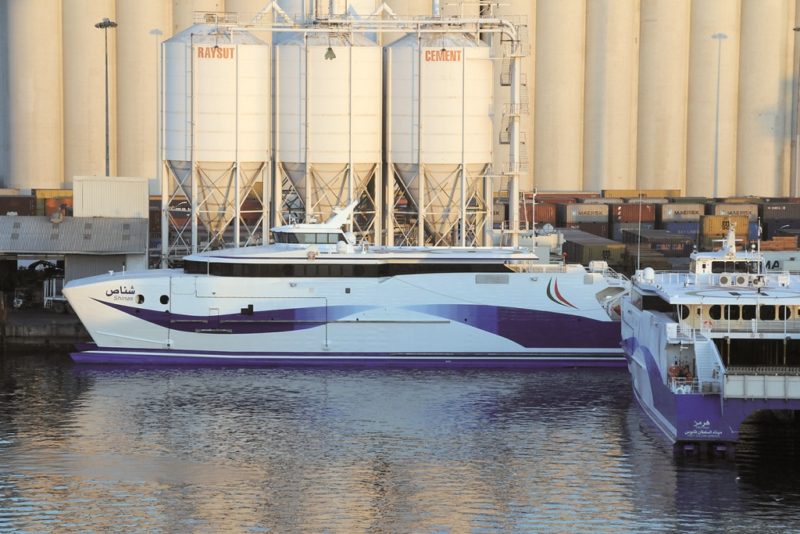
POSTSCRIPT
The Valemax giant Very Large Ore Carriers (VLOC) of 400,000 dwt are ideal for trading with iron ore to the big Port of Sohar, and when the time comes for a refit the giant dry dock at Ad Duqm on the Omanicoast is waiting for them.
Ad Duqm is located south of the offshore Masirah Island in the Al Wusta region on the road to Salalah and the Dhofar region. A new port and town has been built here along with an oil refinery, power station, Free Trade Zone, shipbuilding yard and other facilities. The dry dock is important as it is in one of very few ports in the world that can repair vessels of this giant size.
A small group of fourteen tourists were allowed into Oman in 1983 and thirty years later some 2% of GDP was being provided by tourism, doubling to 4% in 2020.
The Government of the Sultanate of Oman hopes to attract many more tourists in the future from tourist rich Dubai.
Sulatn Qaboos died in January 2020 and has been succeeded by his cousin Haitham bin Tariq Al Said.
There are many delights for the tourist to see in the towns of Muscat and Mutrah along the new broad road on the Mutrah Corniche connecting the two towns.
In wider Oman, one can enjoy a dhow trip in the beautiful fjords of the Musandam Peninsula, enjoy succulent dates at the midsummer harvests, explore the Rustaq Loop in a wonderful drive that combines a lovely mountain backdrop with three Arab forts, visit the UNESCO listed ancient tombs of Bat, Al Kutmand Al Ayn dating back to 2,700 BC, camp beneath the stars in a Bedouin tent at Wihibah Sands, drive in a four wheel drive desert vehicle that combines the coastal fertile parts of Dhofar region with the central region, and watch green turtles nesting at Ras Al Jinz on the easternmost promontory of Oman.

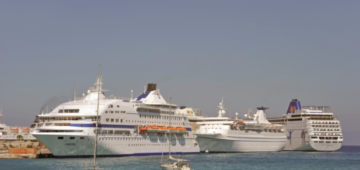



Comments
Sorry, comments are closed for this item